Beef Recalls Are At An All-Time High. Is It The Meat Or Is It Us?
Earlier this month, the Centers for Disease Control and Prevention reported a multi-state outbreak that linked ground beef to food poisoning from salmonella. It’s not the first bad news of its kind this year. Following 2018’s record-breaking number of beef recalls, 2019 is closing in on similarly disturbing amounts of contaminated meat.
Last year, just over 13 million pounds of beef were recalled in 31 separate instances. Meat can be recalled for reasons ranging from the presence of foreign materials to undeclared allergens in combined food products. But more than 12 million pounds recalled last year were due to salmonella contamination. So far in 2019, there have been 27 recalls, some of which are still active. Notable ones include nearly 57 tons in April (that’s over 113,000 pounds) and about 65,000 pounds in October.
In comparison, just under 600,000 pounds of beef were recalled in all of 2016, and about 1 million in 2015.
Food poisoning ― including from salmonella or E. coli bacteria, the most common pathogens that make consumers sick from beef ― hits over 48 million Americans a year. Foodborne illness, in general, is a critical public health problem in the United States. Annually, roughly 128,000 people are hospitalized and almost 3,000 die from foodborne diseases, according to the latest estimates from the CDC.
Between funding constraints and practical limitations, experts say we simply can’t be sure that deadly pathogens are not present in the meat being distributed across the country. A highly consolidated beef industry ― the “Big Four” slaughterhouses process more than 80% of America’s beef ― is killing and gutting and preparing so many cows per day that it’s heightening the risk of contamination. Here’s how it’s spun out of control.
How does beef contamination happen in the first place?
Cows have E. coli and salmonella bacteria naturally present in their gut flora, which is where contamination typically originates, according to Michael J. Baker, a beef cattle extension specialist at Cornell University. It’s not dangerous or injurious to the cattle in that state.
The bacteria are commonly spread during slaughter when the cow’s bowel is improperly perforated or severed. It’s not necessarily obvious when that occurs. Inspectors with the USDA’s Food Safety and Inspection Service (FSIS) regularly run sample tests for signs of E. coli or salmonella contamination at the slaughtering and bloodletting stage ― and follow up with additional tests if the first set comes back positive. Where there are indicators of possible contamination, they also run tests. Specific tests for both pathogens may additionally be run on sample products after the beef is processed.
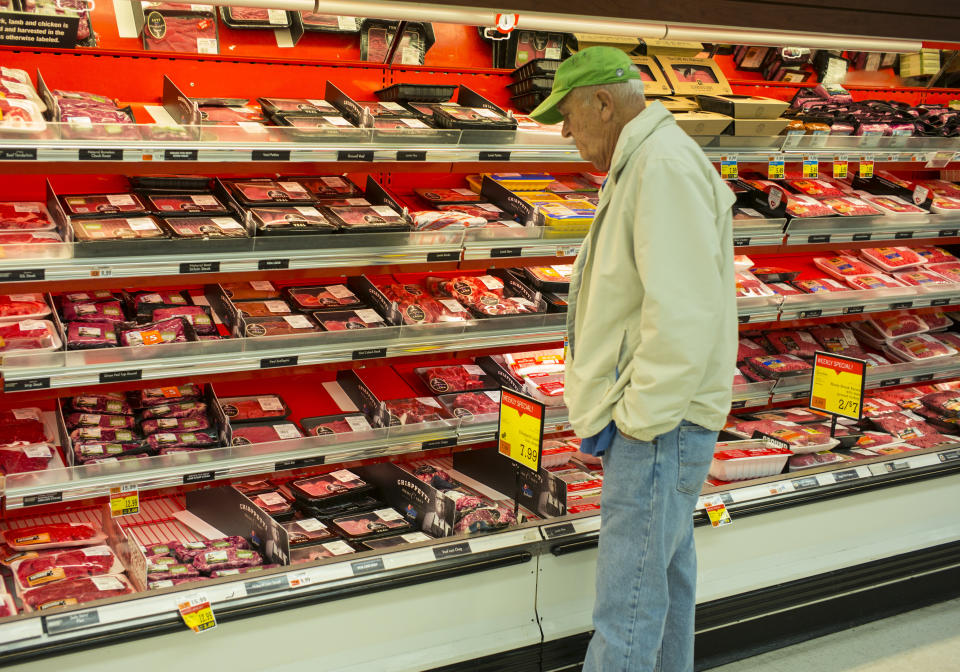
But, practically speaking, the inspectors can’t test all the beef. Some meat contaminated with salmonella and E. coli will get through, especially in ground beef products. (That’s why the USDA recommends cooking beef to an internal temperature of 145 degrees F and ground beef to 160 degrees F.)
The bottom line is that some percentage of people who eat beef get sick. A recent CDC report highlighting the top 31 pathogens in food that cause hospitalization and/or death showed salmonella to be responsible for 23,128 hospitalizations, 452 deaths and over 1 million instances of episodic illness in 2016.
How is the system supposed to work?
The USDA was originally designed to serve a smaller industry of family farms and slaughtering facilities on a more holistic level. But today beef slaughtering is at an all-time high. According to the USDA’s latest data, 25.3 billion pounds of beef were produced in 2016, which is 6% higher than the year before. On a good day, the Big Four ― Tyson Foods, JBS, Cargill and National Beef ― will oversee the slaughter of tens of thousands of cows. That leaves a lot of room for human error.
FSIS employees are located at nearly 6,500 slaughtering and processing establishments and import houses and other federally regulated facilities. More than 10 FSIS employees from around the country who spoke to HuffPost said they routinely work six, and sometimes seven, days a week. Many of them said they were responsible for multiple facilities.
And, ironically, the bells and whistles of the USDA’s rules are now helping to sustain those massive slaughter operations. These days, the smaller, more sustainably minded producers can’t afford to kill their own cows on site.
In 2011, Congress passed the Food Safety Modernization Act, a sweeping reform of food safety policy as implemented by the Food and Drug Administration. The admirable goal was to shift the focus from responding to contamination to preventing it. But the new rules to the extent they apply to beef producers’ operations don’t sweep very broadly.
Rules sometimes stand in the way of safety.
The USDA does have its own somewhat newer regulatory system called HACCP, for hazard analysis and critical control points. It was originally developed by a team of food scientists and engineers from the Pillsbury Company in conjunction with NASA in the 1950s and later implemented by the USDA in 1996. The goal was to lessen the reliance on FSIS inspectors uncovering contaminated meat before it’s sold and to push the industry to make sure their facilities were safe throughout the process.
Under HACCP, each facility must have a written set of standard sanitation rules, conduct regular microbial testing, and meet “pathogen reduction performance” standards, which aim to keep salmonella out of the facility.
But there have been hiccups in fully implementing the HACCP vision. In 2001, for instance, the U.S. Court of Appeals for the 5th Circuit upheld a lower court ruling that blocked the USDA from shuttering a Texas meat-processing plant because it had failed the HACCP tests three different times. One test suggested that almost 50% of the beef had critical levels of salmonella.
The court held, however, that the contamination came from raw meat entering the facility and that “the statute does not authorize regulation of the levels of bacterial infection in incoming raw materials.”
There is also a financial motivation that doesn’t always work in favor of stricter safeguards. Obviously, beef producers don’t want their product to spread illness. But recalls result in over $255 million in losses each year for the food industry.
Politics can put pressure on safety measures, too.
A fact sheet produced by President Donald Trump’s campaign team on Sept. 25, 2016, described the food safety system as “inspection overkill” and called out USDA and FDA regulations as “too strict.” The Trump administration began by proposing to cut $4.7 billion from the USDA’s entire discretionary budget for fiscal year 2018 ― that would have been a 21% drop, the biggest the department has seen since 1988. The administration’s 2020 plan would cut the USDA budget by $3.6 billion from what the 2019 budget proposed.
So far the FSIS budget has largely been protected. But according to a 2018 report, the USDA’s inspector general found that the FSIS “continues to face challenges” in keeping up with regulatory requirements.

Because of budgetary strains, 35% of the “temporary inspectors” that the FSIS hired in 2014 to oversee poultry ended up actually overseeing beef, according to a FOIA request from April 2014. Training for poultry inspections is vastly different from training for beef inspections, Baker said, because the pathogens are different. But it costs less to train a poultry inspector.
According to the USDA employee manual, these temporary employees should not be hired for more than 12 months. But because the USDA budget was cut, the agency was forced to shift lower-paid temps into positions previously held by career professionals.
Under any system, it’s impossible to detect and kill all dangerous strains of E. coli and salmonella before beef reaches America’s kitchens. But it’s hard to argue that the current inspection system is doing the best it can.
Last year, Americans consumed an average all-time high of 222 pounds of beef per person. Between the rising demand, critical funding cuts and missing oversight, that meat is being produced by an industrial complex that puts millions of consumers a year at risk of foodborne illness.
CORRECTIONS: This article has been revised in several sections to more accurately describe the USDA inspection process, including when tests are run on beef, and how HACCP works. Additional errors included the following: The data on recalls generally applied to recalls of beef and beef products, not just to ground beef. Each year, over 48 million Americans suffer from foodborne illnesses of all kinds, not just from salmonella and E. coli. About 128,000 of them are hospitalized, not 200,000. The CDC does attempt to estimate the number of cases of foodborne illness that are not reported. Beef products are one of many but not the primary source of salmonella and E. coli infections in humans. Statements from two sources have been cut due to concerns that they did not properly reflect the sources’ observations, including a section on the use of “private” USDA inspectors. Additional language has been added about the USDA budget in recent years.
Related Coverage
Taco Bell Recalls 2.3 Million Pounds Of Beef After Finding Metal Fragments
The Environmental Impact Of Your Thanksgiving Dinner
Thanksgiving Turkey Alternatives: 5 Birds You Should Eat Instead
Also on HuffPost
Love HuffPost? Become a founding member of HuffPost Plus today.
Spinach
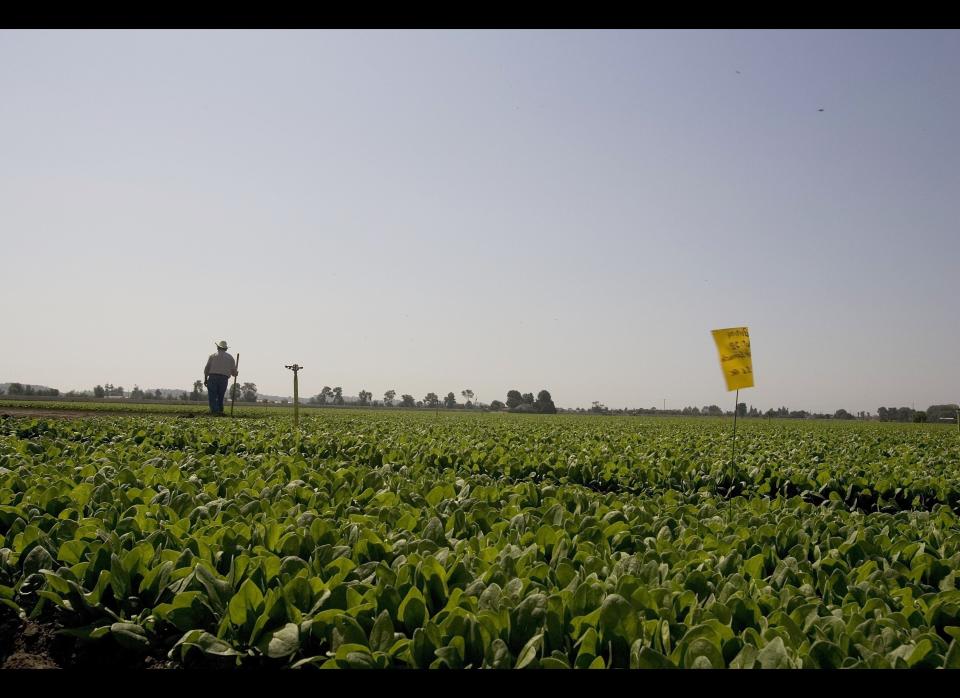
Eggs
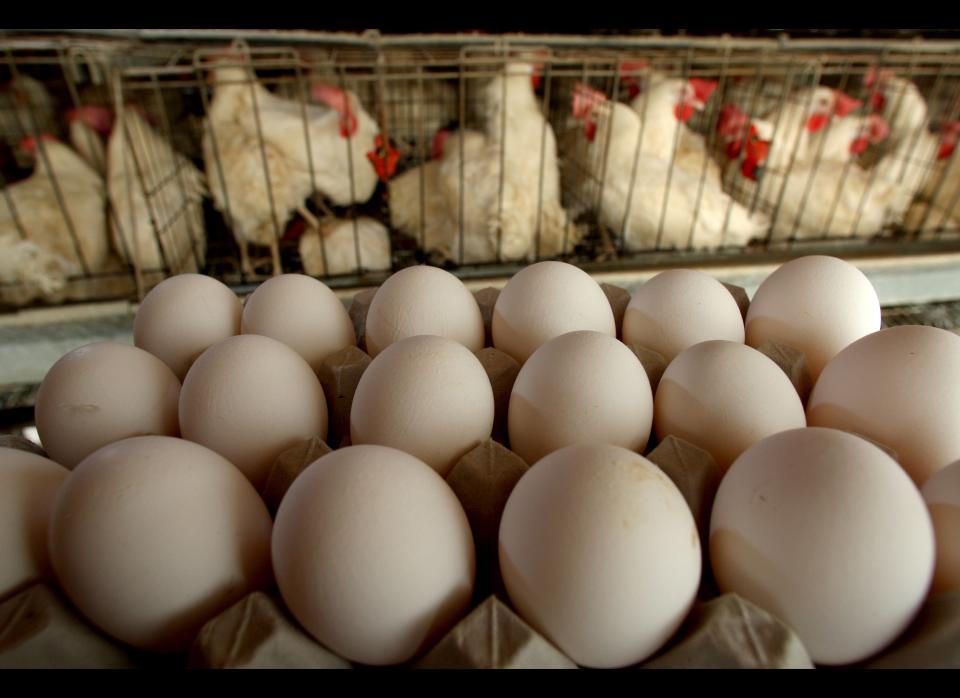
Beef
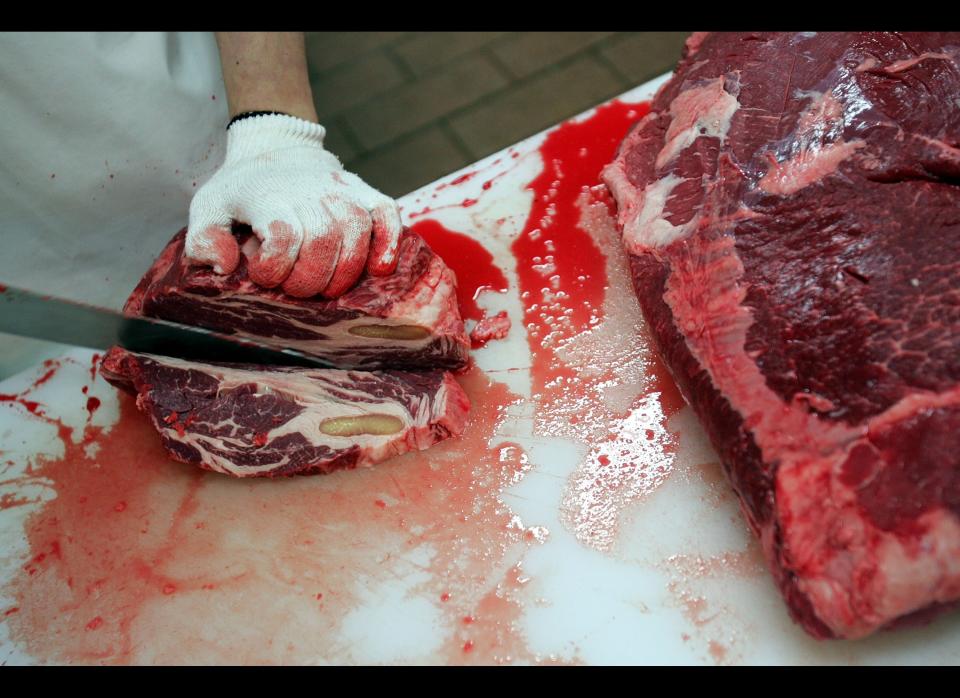
Peanut Products
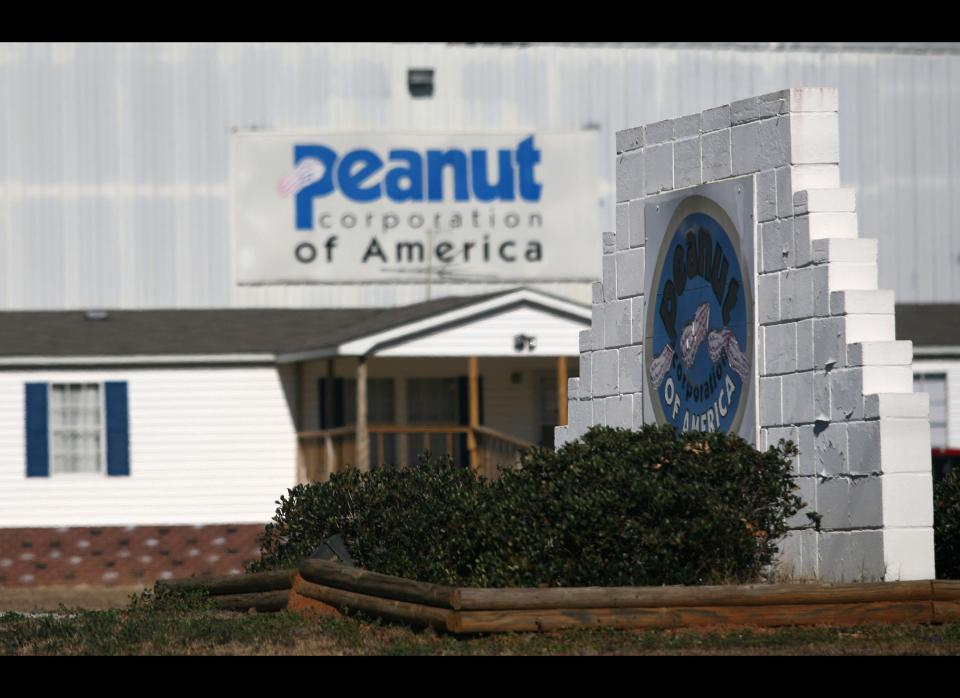
Alcohol And Caffeinated Beverages
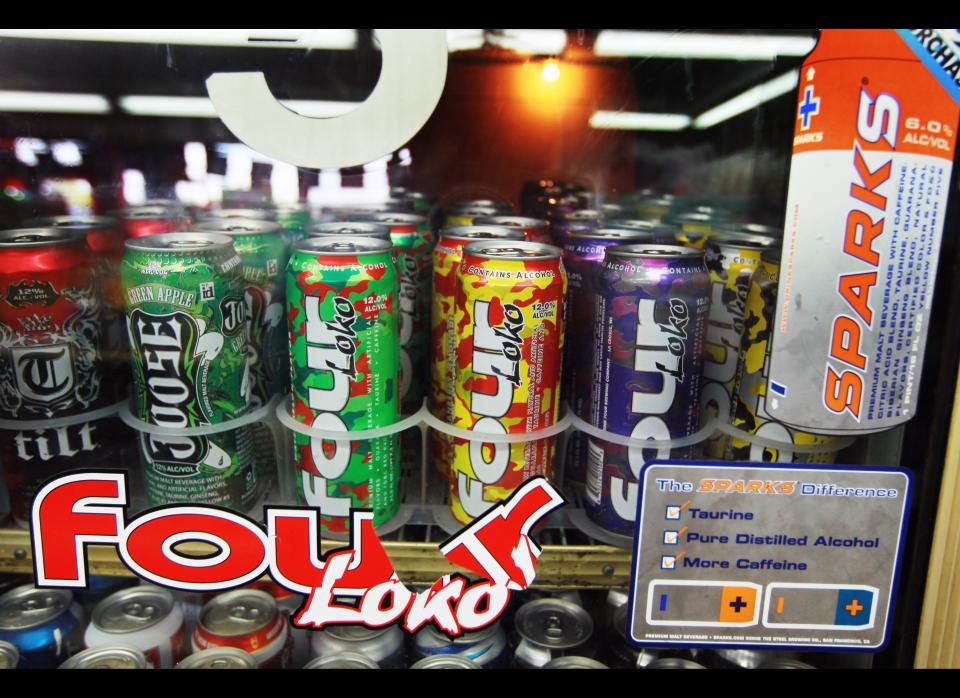
Hydrolyzed Vegetable Protein
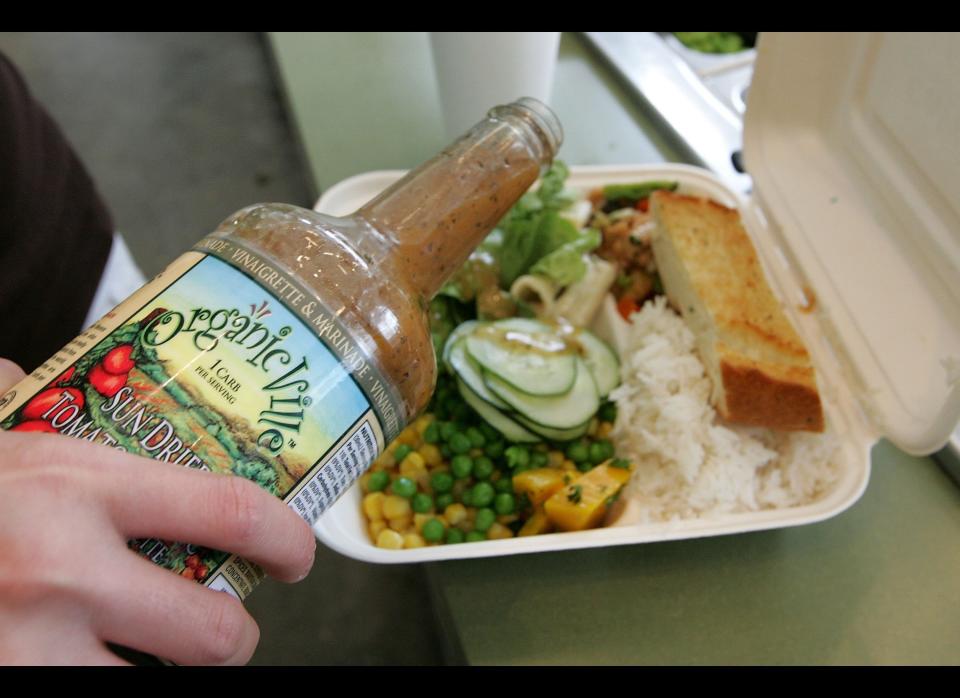
Romaine Lettuce
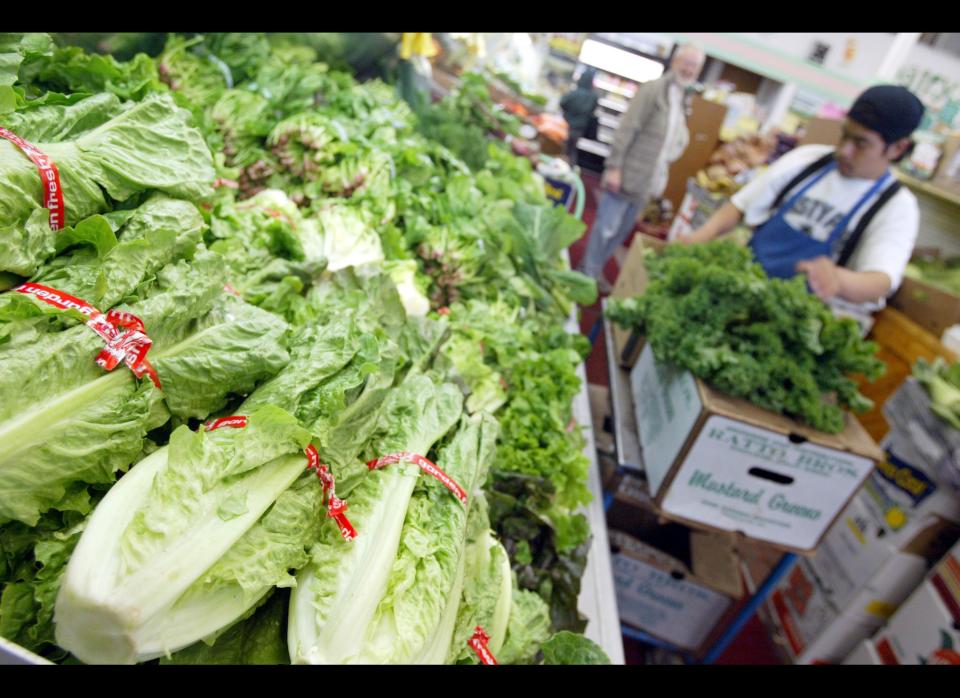
Instant Milk Ingredient

Pistachio Products

This article originally appeared on HuffPost.
